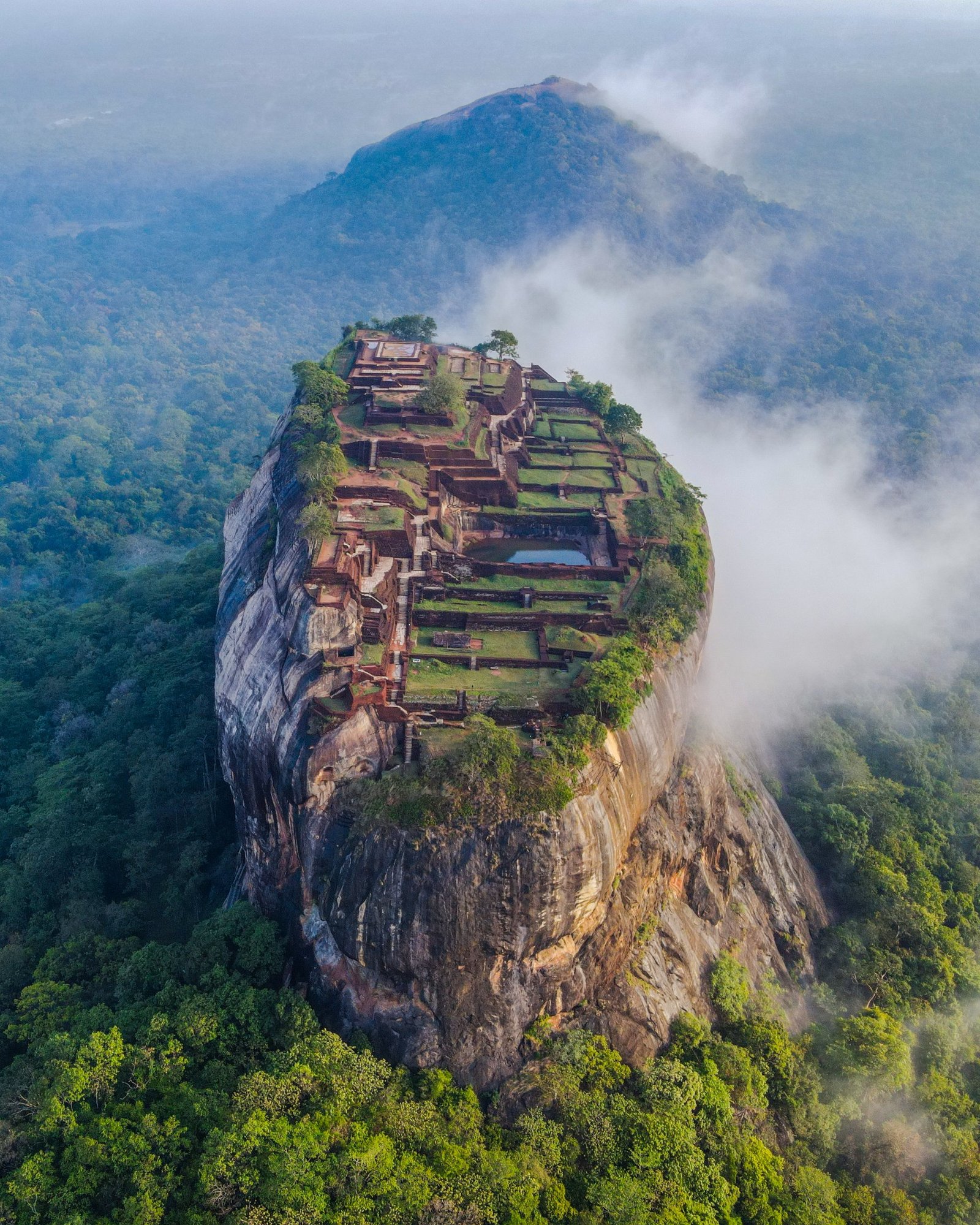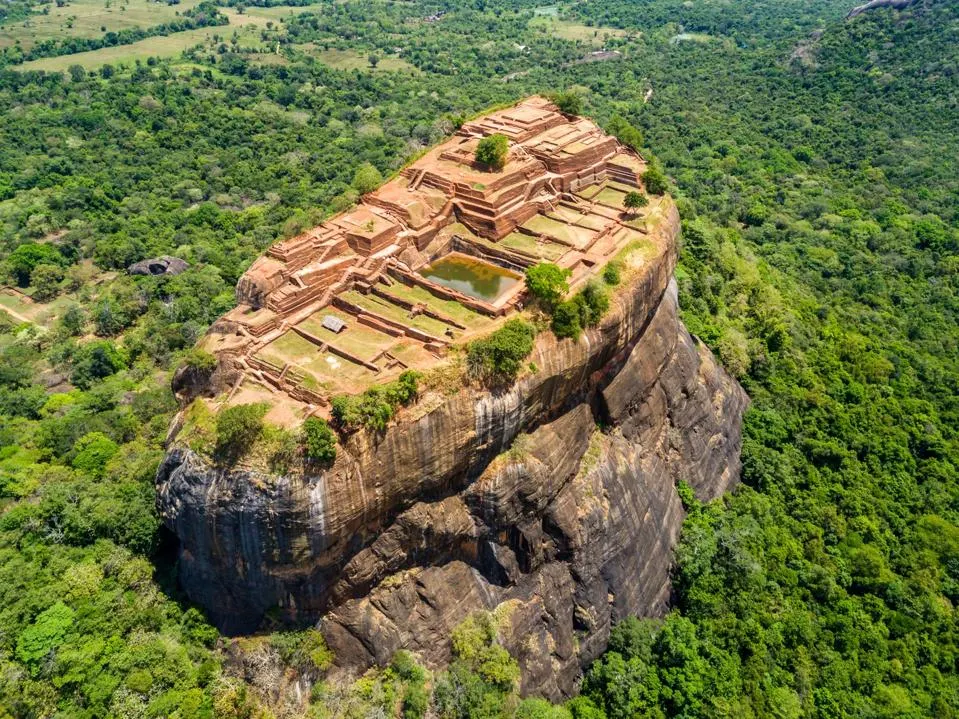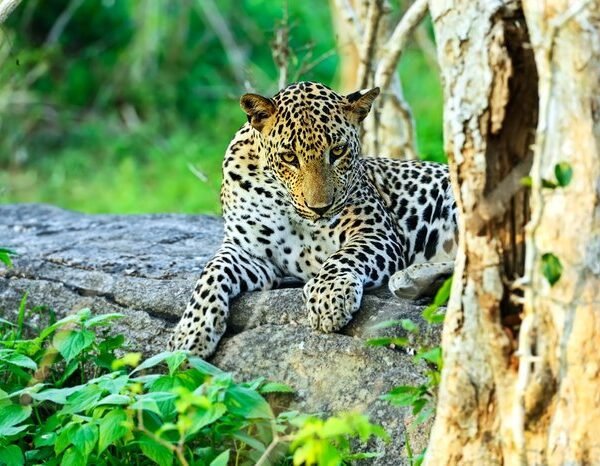
Pounding the ingredients for a typical Sri Lankan sambal on a giant pestle and mortar, we come to the thorny issue of how much chilli to add.
The delicious relish – a mix also containing onion, grated coconut and lime – is just lacking the fire of the last ingredient. I turn to Disna, who is teaching us the traditional ways of village cooking, and ask how many she would throw in.
‘For you, I think maybe one or two,’ she replies carefully. But what about if she were cooking for her family, I ask. ‘Ah – maybe 20 or 21?’
Clearly I’m not going to be able to acquire a Sri Lankan palate in a week, but I’m keen to learn more – and taste more – of the spicy staples of curries, dhal and rice.
I’ve come to Sri Lanka on a food tour launched by operator Tropical Sky to showcase the rich food history of the ‘Pearl of the Indian Ocean’.
After massive setbacks in recent years – the 2004 tsunami, the Covid pandemic and more recently civil unrest that led to the ousting of the ruling Rajapaksa family – the country is now off the UK government’s ‘don’t visit’ list and there’s a warm welcome (and budget prices) for tourists.
Sri Lanka, also dubbed the teardrop of Indian because of its shape on the map, is famed as a trading port for spices and, over the years, has been colonised by the Portuguese, Dutch and the British, before gaining independence in 1948.
Thanks to its tropical climate – in the 20s year-round in coastal areas – fresh fruit and vegetables including coconuts grow abundantly. And as an island nation, there’s plenty of seafood on offer.
Known as Ceylon until 1972, Sri Lanka is also the world’s biggest tea exporter – benefiting from the crop introduced by Scotsman James Taylor in 1867. No meal here is complete without it. And it’s a perfect cooler when eating meals prepared by cooks who cock their spice spoons in disdain at the Scoville scale.
Touching down in Colombo after a 10-and-a-half hour flight, we are picked up by our guide and driver Upul, who whisks us off to Dambulla for a village tour. (The planned start to our stay, including an overnight stay and food tour in Colombo, had to be cut due to a major airline delay).
The tourist village sets out the traditional rhythm of Sri Lankan life so soon we are motoring through the jungle on a very basic motorised cart, past jackfruit trees and pineapple plants.
There’s a sudden downpour – the first in months apparently – which forces us to shelter in a nearby tuk tuk. ‘Have you checked your horoscope?’ asks Upul, telling us that is what the locals do and advising we were ‘lucky’ to have brought the rain.
Ferried across the river in canoes, we arrive at a village hall, where Disna puts us to work.
She has us shredding coconut on a lethal-looking blade, dehusking rice, pounding sambal on that massive mortar and stirring and chopping curries.
The traditional foods – ones we see repeated often in hotel buffets and in other cooking courses – are fragrant dhal, rice, okra and tomato curry with coconut milk, fiery sambal made with coconut and spices and rotis. Curry leaves, mustard seeds, ginger, garlic, curry powder, black pepper, onion and of course chillis are a frequent base to the dishes.
With the help of Disna we’ve soon whipped up a feast, which we eat in the traditional Sri Lankan way – served on a large leaf and eaten with our hands. No unnecessary washing here.
If you’ve ever enjoyed a heated-up curry for breakfast, Sri Lanka is the place for you. The curries and dhal are traditionally served at the start of the day and it seems there’s a nation of housewives up early to cook them.
Later, on a tour of Kandy’s food market, our guide Angie confesses she rises at 4.30am each day to rustle up the morning meal, though she tends to be in bed by 9.30pm and often has an afternoon catnap.
Despite the early start, she’s full of energy as she guides us around the huge central market, spilling over with exotic, fruit, vegetables, meat and fish.
At one stall we sample four varieties of bananas and Angie tells us there are 70 in all, as well as 140 types of mango. Other fruits to try include a cheese apple, with an inside that really does have the texture of cheese, and a wood apple – an unpleasantly brown-coloured fruit that apparently elephants love to eat (and goes through them whole).
Cassava, bitter gourd and ‘drumsticks’ – a green vegetable that suits its name – are some of the many vegetables we wouldn’t see at home. And it’s a feast for the senses as we admire the bright array of foods, then stop for snacks of dodol (boiled up coconut and jaggery stirred for hours with cashew added), uludu wade (savoury doughnuts) and the dessert favourite of buffalo curd and treacle.
Still in Kandy, we go by tuk tuk to a hilltop house where host Rukshani teaches us more about standard Sri Lankan cuisine. Like Angie, she is up around 5am each day to cook and says, in her family’s view, no meal is complete without dhal.
Chicken, okra and a delicious beetroot curry are on the menu this time, with only a band of squawking monkeys interrupting Rukshani’s instructions. Luckily her son, the official monkey scarer, is on hand to see them off. The monkeys only need to hear her call his name to scarper away into the trees. And there’s no need for the tuk tuk on the way downhill – we could practically roll.
In a trip firmly dictated by our stomachs, other highlights include a tour of Spice Garden at Matale, where the spices and herbs regularly used could be seen in the wild. Our guide explains the use of plants such as cinnamon, cardamom, pepper creepers, cocoa beans, vanilla and cloves, also detailing their healing qualities in Ayurvedic medicine.
A ten-minute massage at the end is an unexpected bonus and I leave via the gift shop with spice kits, bundles of cinnamon, tooth powder for general dental health and garlic pills that came with the suggested benefits of reducing cholesterol and obesity as well as ‘rejuvenation and aphrodisiac’.
One of our final food-related stops is a tour of the Giragama tea factory. Sri Lanka produces around 300million kg of tea a year and 97% of it is exported. Here, in a very colonial building, we are shown the process from drying to rolling and grading, with tea sorted into 25 qualities. This factory was founded in 1903, most of the machinery is from the original era. Only the colour separator, which uses 24 sensor cameras to recognise leaf colours, appears thoroughly modern. Our guide shrugs and gives an explanation along the lines of: ‘If it ain’t broke, don’t fix it.’ Needless to say, there’s a very fine cup of cha on offer at the end.
Luckily I’m a greedy person, because I’m eating a lot of food on this tour. As well as the midday tourism meals, I’m tucking into breakfast at four or five-star hotels mostly run by Sri Lankan chain Jetwing. Because the country has seen such a melting pot of cultures add to its diet, you can feast on morning curries, tuck into a traditional English breakfast, pile into fresh fruits and juices or try hoppers – thin, bowl-shaped pancakes with an egg in them.
Standout hotels include the Vil Uyana Sigiriya hotel, where the main wooden building sits over a moat with a crocodile raising her head in greeting. With an infinity pool nearby it looks like something out of a Bond film. The Jetwing Kandy Gallery in Kandy is similarly upmarket, so it’s a relief to see cocktails cost around £4 and bottles of wine cost start at around £20.
There is some relief to the ever-expanding stomach, though, as we get our steps in on some of the ‘must-see’ Sri Lankan excursions.
Up at 4.30am one day (housewife hour), we trek up 1,200 steps to the summit of Sigiriya Rock, a UNESCO world heritage citadel site dating back to the 5th century. It’s awe-inspiring to see the views from the top at sunrise and to see the palace and fortress development – including irrigation system and water garden – which King Kashyapa had built in just seven years. I’m red and puffing as I tackle yet more stairs to see the incredible frescoes of women ‘tattooed’ into the rock, but the king apparently had no such problem – because he had servants carry him up the entire mountain in a sedan.
There’s a further 365 steps up to another world heritage site, the Dambulla Cave Temple, a cave complex full of stunning Buddha statues and rock paintings dating back to the 2nd Century BC.
And there’s plenty of (barefoot) walking involved as we visit Kandy’s Temple of the Tooth Relic. The landmark tourist site is a shrine to a piece of tooth from Buddha and crowds throng the site three times a day to pay respects to the Buddhist leader. With its mass of devotees, drummers and ornate decorations, it’s quite the spectacle.
We also buckle up for a thrilling safari ride through Kaudalla National Park, home to leaping monkeys, flocks of water birds and Indian elephants. The animals are completely in the wild here and jeeps are forbidden from leaving designated paths, but we’re lucky enough to have a herd of elephants stroll in front of our path. While I’ve been living to eat, these creatures definitely eat to live. They walk 18 hours a day and eat 250kg of grass. You can see them preparing their next mouthful with their trunk even as they’re chewing.
With the main part of the food tour over, we head to the beachside ‘add on’ of the Anantara Kalutara Resort. As well as the top-quality food I’ve become used to, it offers free morning activities – a rejuvenating yoga session in my case – plus an array of (paid-for) activities including a sublime hour-long massage ($110) and a Spice Spoons cooking course ($150 or $250 for two) with one of the hotel’s chefs.
The experience begins with a ride by tuk tuk to the local market and spice traders to pick up the meal’s essentials. Then our class dons aprons and chef hats to look the part in the outdoor kitchen as we pre-slice and dice ingredients for our feast.
There’s the usual – okra and tomato curry, a spicy chicken dish, drumsticks, beans, deep-fried then curried aubergine and sambal – plus this time an epic dish of red chilli crab. It’s enough to have us groaning with pleasure – and congratulating ourselves on a small further step toward chilli tolerance.
Original Content Source:
The above content is based on an article from Jenny Forsyth. The original post, titled “From 140 mango types to curry for breakfast – Sri Lanka should be your next foodie getaway,” was authored by Jenny Forsyth and published on Dec 17, 2023, 8:00am. The information presented here has been summarized and adapted for this context.
Link to the Original Blog Post: https://trib.al/q2JmuL1





















